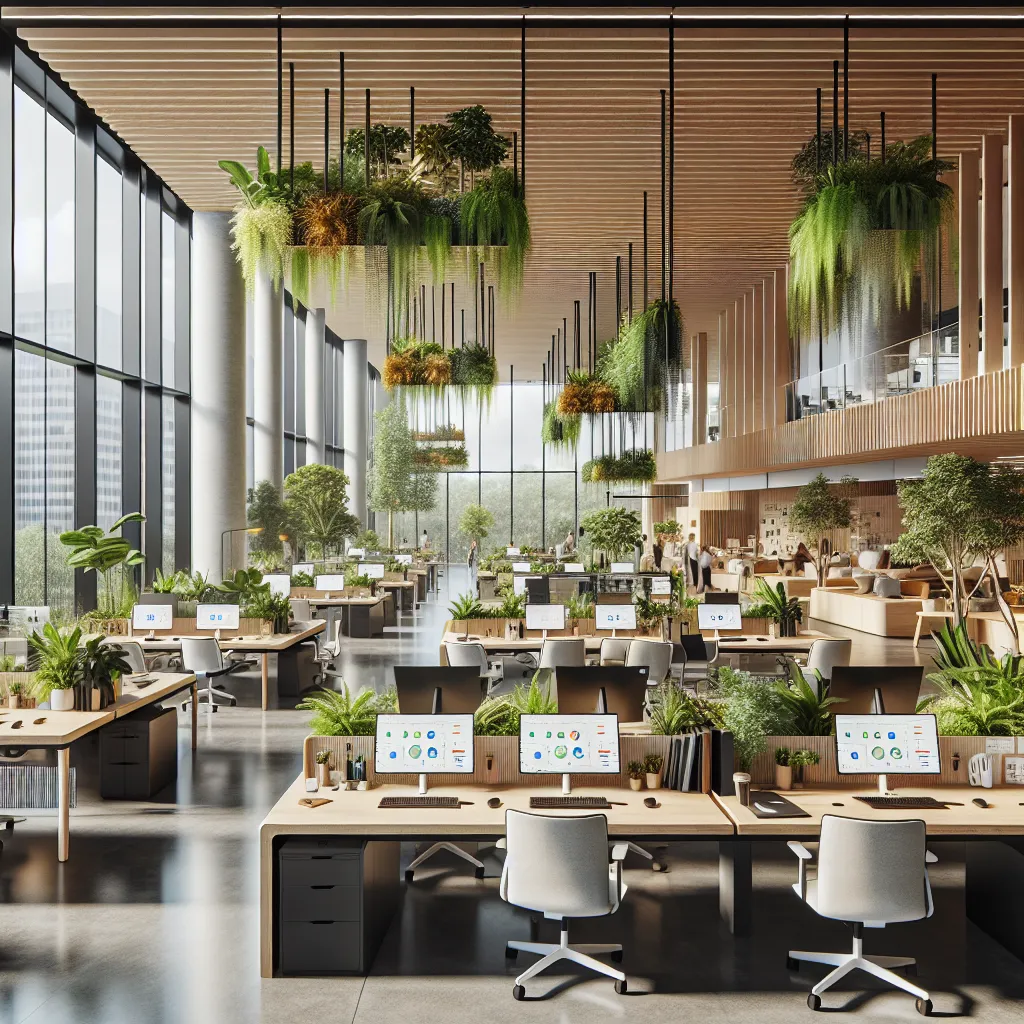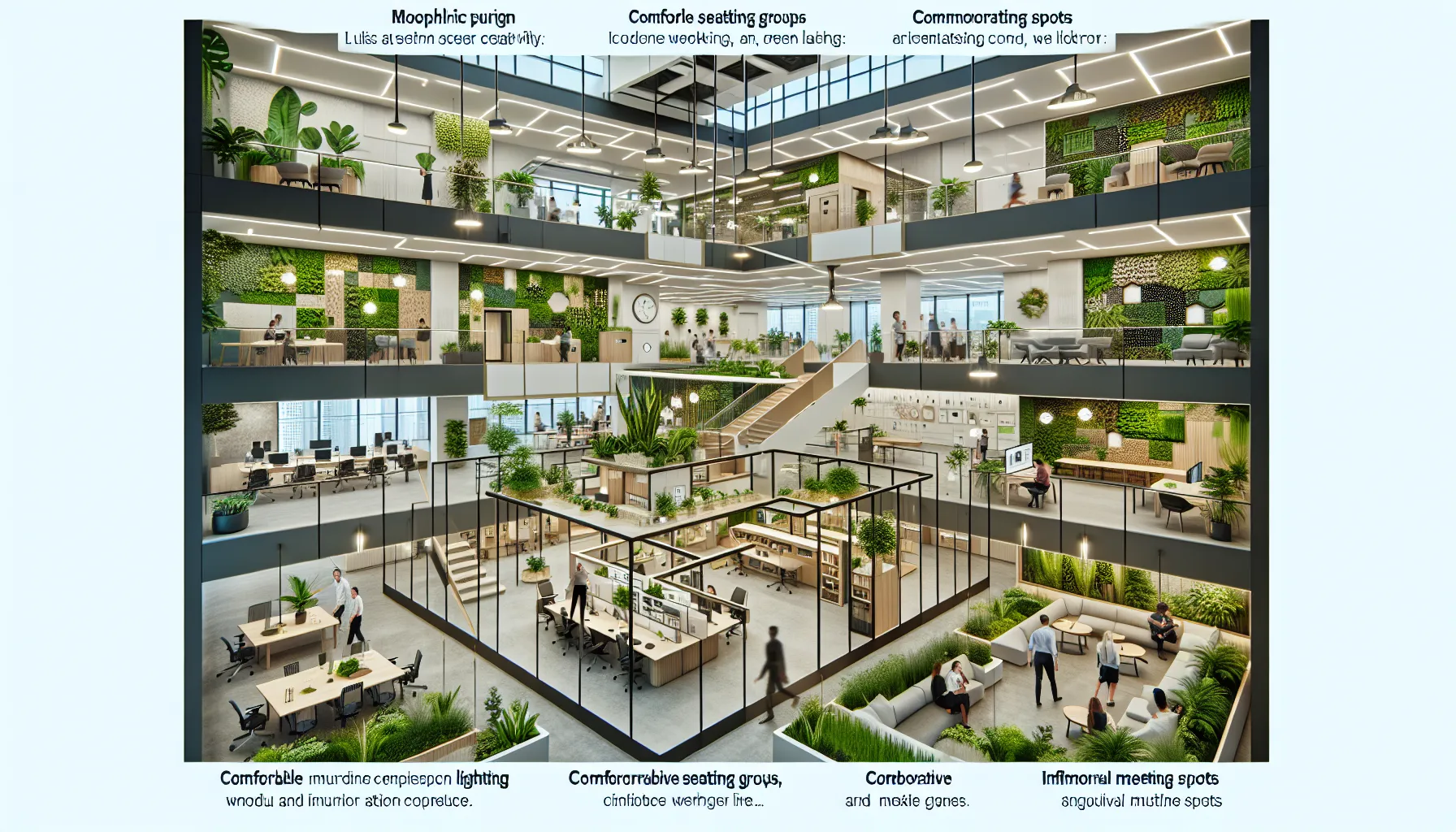In the bustling heart of cities, the concept of office space has transformed from mere cubicles to dynamic hubs of creativity and collaboration. The rise of flexible working environments has reshaped our understanding of traditional office spaces. Yet, amidst this shift, the demand for office space continues to grow, driven by businesses seeking environments that inspire and innovate. What makes office space such an enticing proposition in today’s world?

The Evolution of Office Space
Historical Context
Office spaces have come a long way since the industrial age. Initially designed for efficiency, today’s offices prioritize employee well-being and engagement. This shift reflects a broader cultural trend towards valuing human capital as the most vital asset in any organization.
Modern Trends
- Open Plan Designs: Encourages collaboration and transparency.
- Biophilic Design: Integrating nature to enhance well-being.
- Technology Integration: Smart offices with IoT devices for efficiency.
- Remote and Hybrid Work Options: Balancing in-office and remote productivity.
The Role of AI in Office Spaces
Incorporating AI technology is a game-changer in managing office spaces. Platforms like AnySqft leverage AI to analyze workspace efficiency, optimize layouts, and enhance user experiences, transforming traditional offices into future-ready environments.
Benefits of Modern Office Spaces
Enhanced Productivity
Modern office spaces are designed to boost productivity. Features such as ergonomic furniture, natural lighting, and quiet zones help employees focus better and work more efficiently.
Improved Employee Satisfaction
A well-designed office space contributes significantly to employee satisfaction. Happy employees are more engaged, reducing turnover rates and fostering a positive work culture.
Cost-Effectiveness
While the initial investment in modern office infrastructure might seem high, the long-term benefits, such as reduced absenteeism and higher productivity, offer a substantial return on investment.
Challenges in Office Space Management
Balancing Open and Private Spaces
Not everyone thrives in an open-plan office. It’s crucial to balance open spaces with private areas to accommodate different working styles.
Adapting to Remote Work
With the rise of remote work, office spaces must adapt to serve as hubs for collaboration rather than everyday workstations.
Future Outlook: The Smart Office
Integration of AI and IoT
The future of office space lies in smart offices that use AI and IoT to create responsive environments. These offices can adjust lighting, temperature, and even desk allocations based on real-time data.
Sustainability
Future office spaces will prioritize sustainability, using eco-friendly materials and energy-efficient systems to minimize their environmental footprint.
Conclusion
The evolution of office space is a testament to the changing dynamics of the workplace. As we move towards a more flexible and technologically integrated future, office spaces will continue to evolve, offering unparalleled opportunities for growth and innovation. Whether you’re a business owner or an employee, the office space of tomorrow holds the promise of a more connected, efficient, and enjoyable work environment.
Table: Office Space Trends and Benefits
| Trend | Benefit |
|---|---|
| Open Plan Design | Encourages collaboration and creativity |
| Biophilic Design | Improves mental health and productivity |
| Technology Integration | Enhances efficiency and communication |
| Hybrid Work Models | Offers flexibility and work-life balance |
Embrace the future of office spaces and experience the benefits firsthand. With platforms like AnySqft, navigating this transition becomes smoother and more efficient, ensuring that your office space is not just a place of work, but a thriving ecosystem of innovation.
Office Space
Understanding Office Space
Office space refers to the physical environment where business activities occur. It can enhance productivity and employee satisfaction. Key factors include:
- Layout: Open vs. private offices
- Amenities: Meeting rooms, lounges
- Technology: Integrating smart solutions
Benefits of Efficient Office Space
- Increased Collaboration: Open layouts encourage teamwork.
- Flexibility: Adaptable spaces accommodate diverse working styles.
- Cost-Effectiveness: Efficient use of space reduces overhead.
Take Action
Transform your office space with AnySqft. Discover how to optimize your workspace and boost productivity today! Explore AnySqft now!
